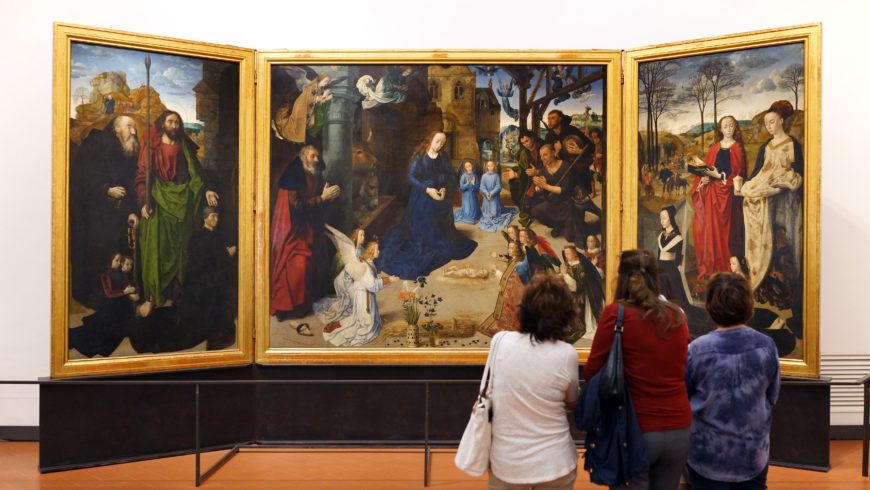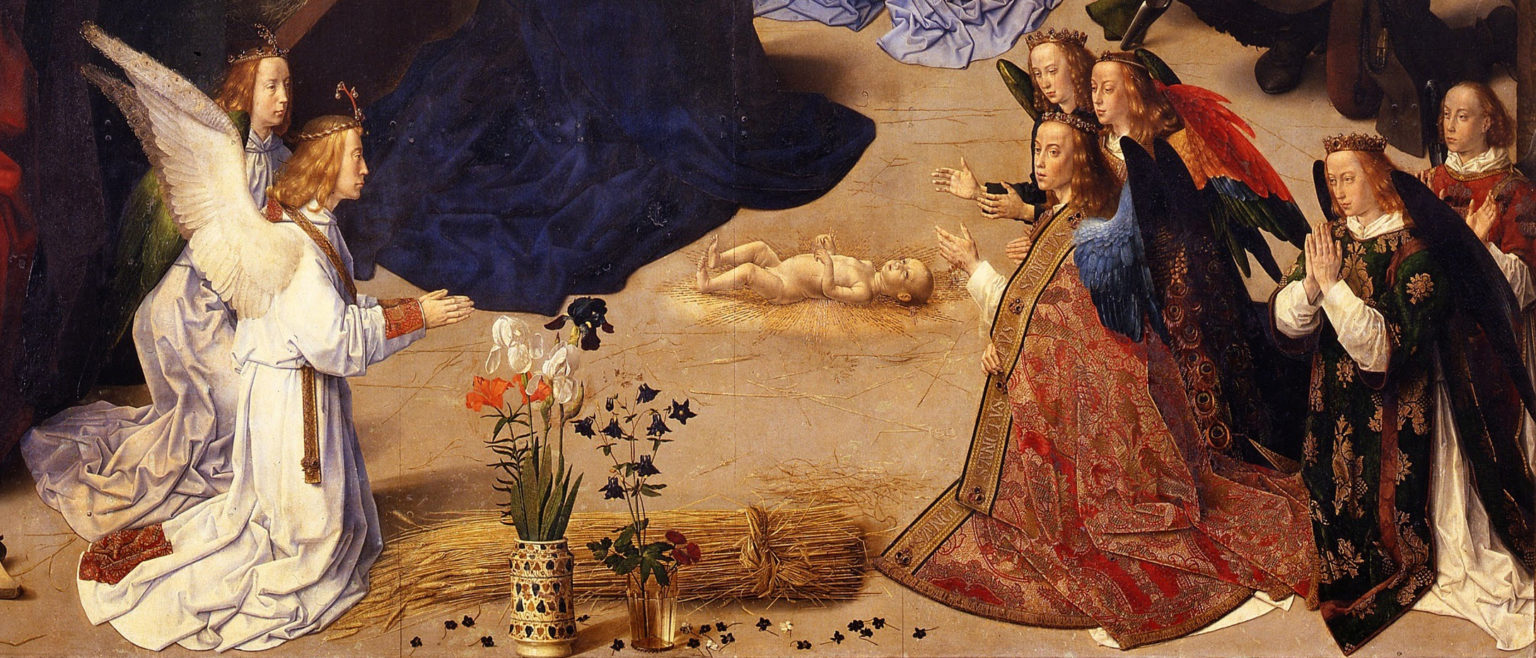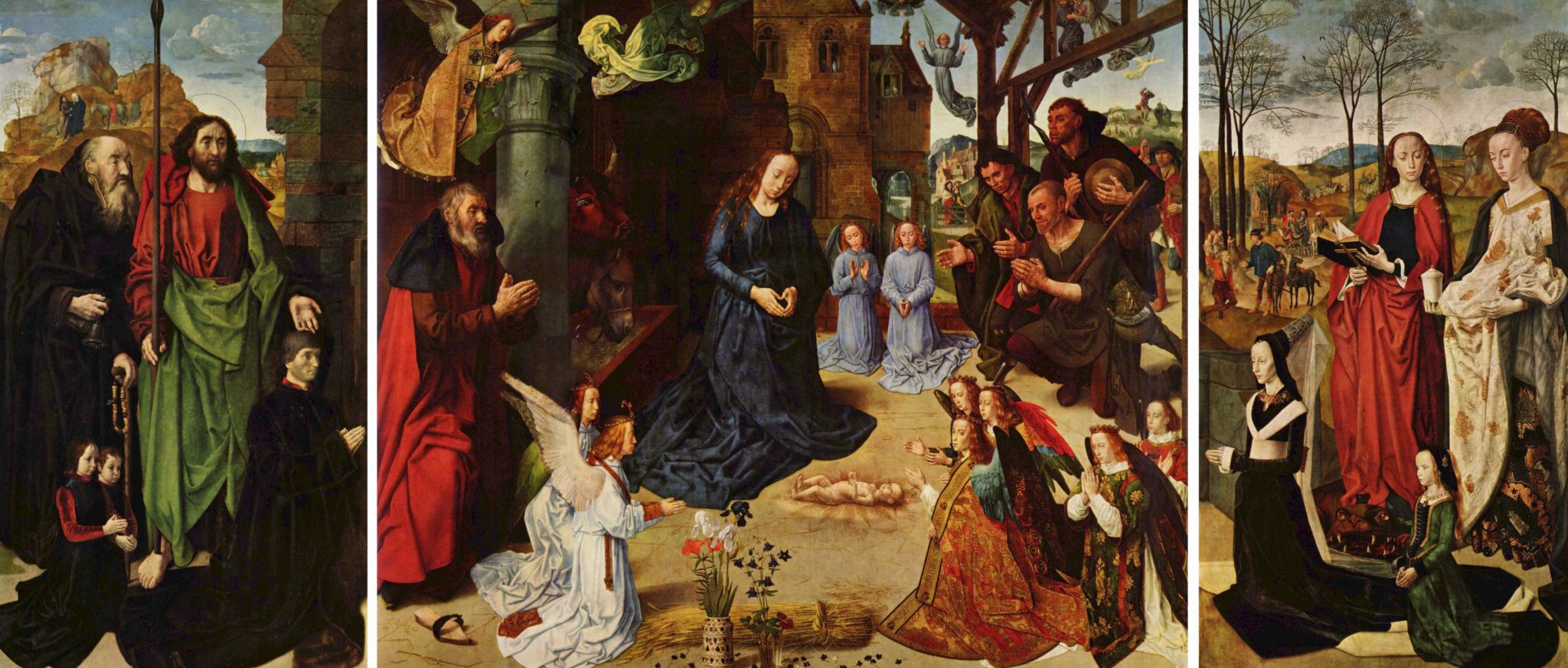Hugo van der Goes, Portinari Altarpiece

The Portinari triptych of about 1476 by Hugo van der Goes was a Northern commission by Tommaso Portinari for the Florentine church of Sant’ Egidio. The central panel represents Mary, Joseph, shepherds, and angels adoring the newborn Jesus, who lies on the ground surrounded by a glow of light. In the distance, at the upper right, an angel announces Jesus’ birth to the shepherds.
Certain details, such as the vases of flowers in the foreground express the typical Netherlandish taste for endowing everyday objects with Christian meaning. The vase at the left, for example, contains flowers that denote Jesus’s royal nature as well as his purity and passion. The grapes and vine scrolls on the surface of the vase allude to the wine of the Eucharist and to Jesus as the Church. [“I am the vine.”] Behind the vases is a sheaf of wheat, the placement of which nearly parallels that of the infant. This refers to his institution of the Eucharist at the Last Supper, when Jesus proclaimed the wine his blood and the bread his body.

The glass container at the right is penetrated by light as Mary was impregnated by God’s divine light and became the vessel of Jesus. It holds two types of flowers: red carnations (symbolizing pure love) were called “nail flowers” in Dutch, possibly alluding to the three nails of the Cross, and the columbines symbolize Mary’s suffering and humility, as do the violets strewn on the ground. The particular arrangement and iconography of the vases, wheat, and flowers, and their formal relationship to Jesus, reveal the liturgical implications of the image and its relation to the enactment of the Eucharist in its actual setting in a church.
In the background, David’s harp on his palace refers to Jesus’s descent from the House of David. In the shed, the ox looks up and observes the event taking place before him, while the donkey keeps on munching. This indifference to the birth of Jesus on the part of the donkey became associated with heretics and nonbelievers who failed to recognize Jesus as the Savior.

Hugo endows some of his figures with tension and anxiety. This is particularly true of the shepherds at the right of the central panel, whose grimacing faces and frantic gestures reflect their eagerness and wonder before their savior. In the side panels, the donors and three of their seven children kneel in front of their patron saints. The children are the first in Netherlandish art to have facial features suitable for their age.
This is Hugo van der Goes’ greatest surviving work. In 1483, it was sent to Florence, where it was greatly admired, and its influence on Italian artists during the latter part of the fifteenth century was considerable. [1]
- Laurie Schneider Adams, Art Across Time, vol. II, 4th edition (New York: McGraw Hill, 2011), 525. ↵

